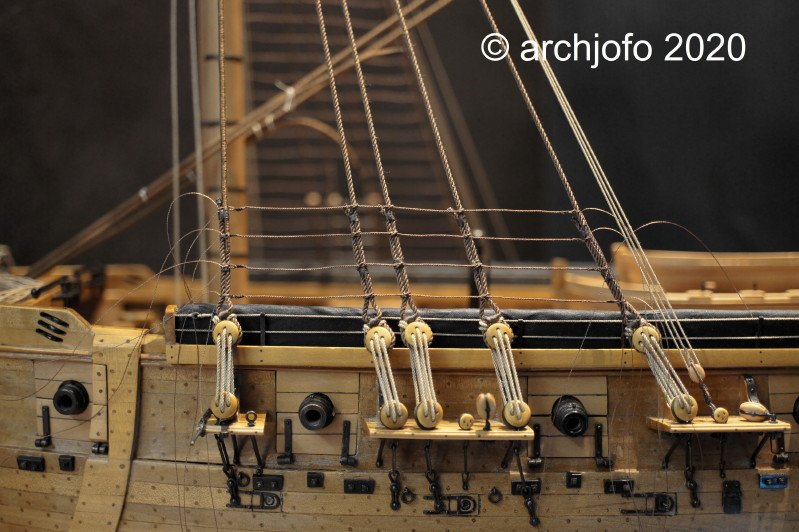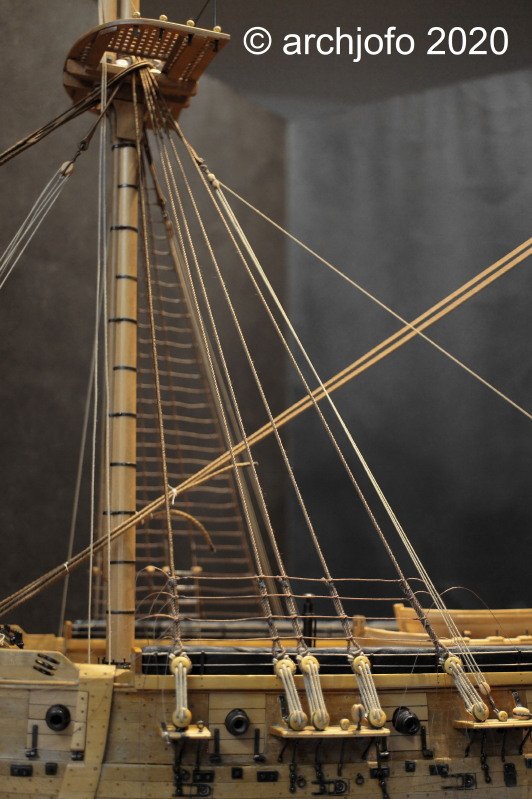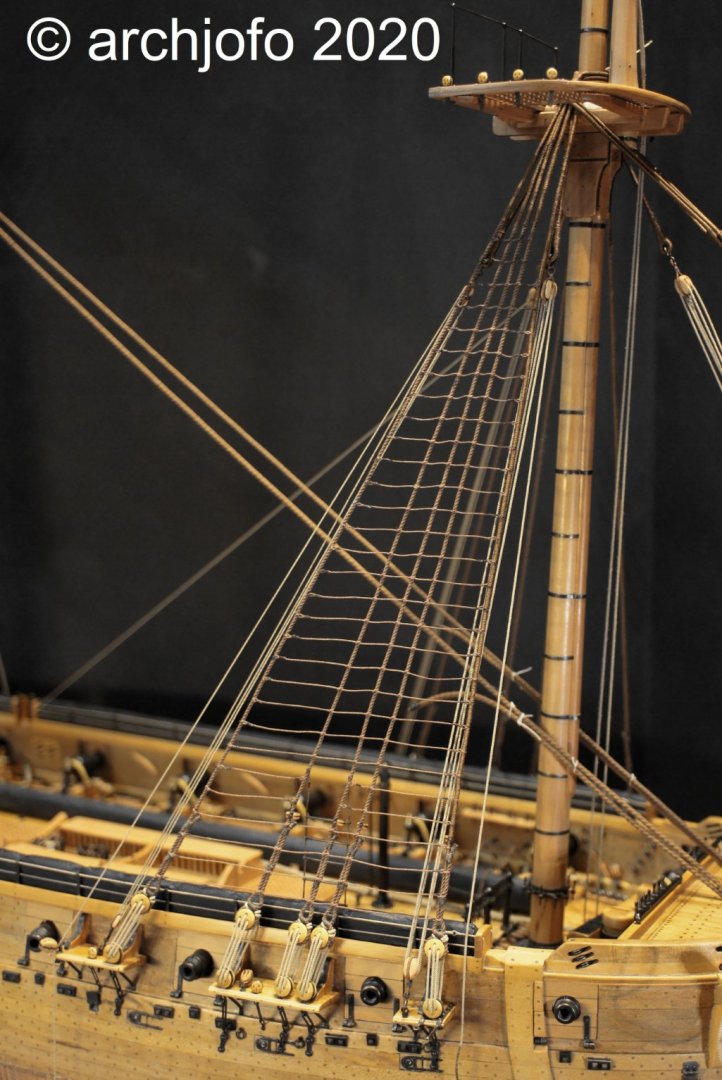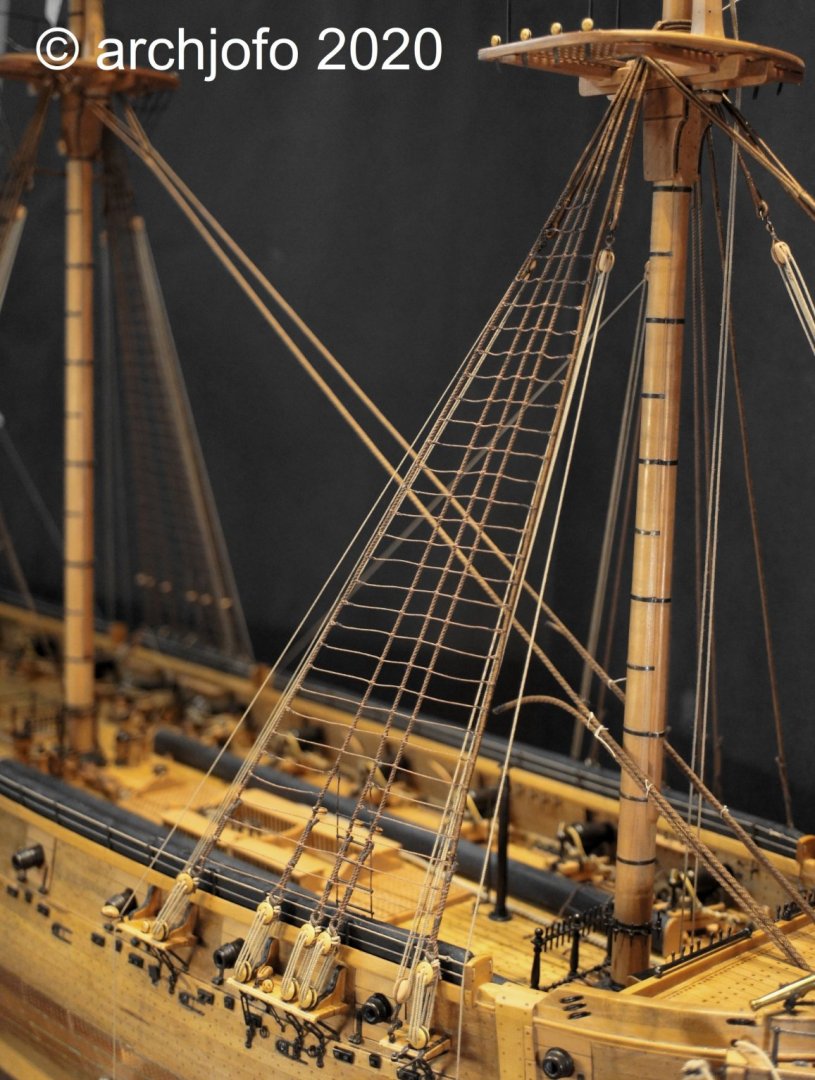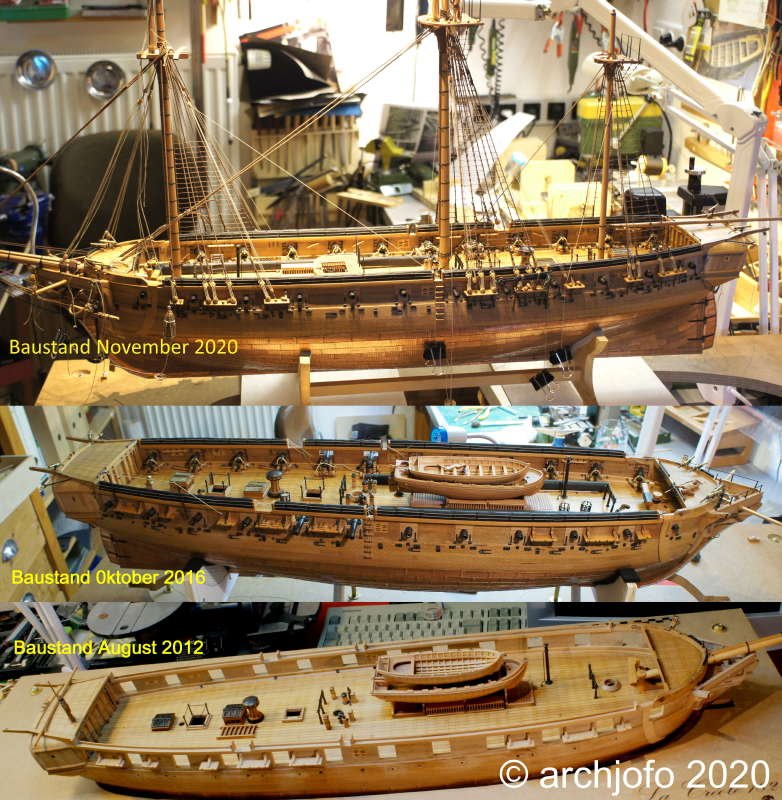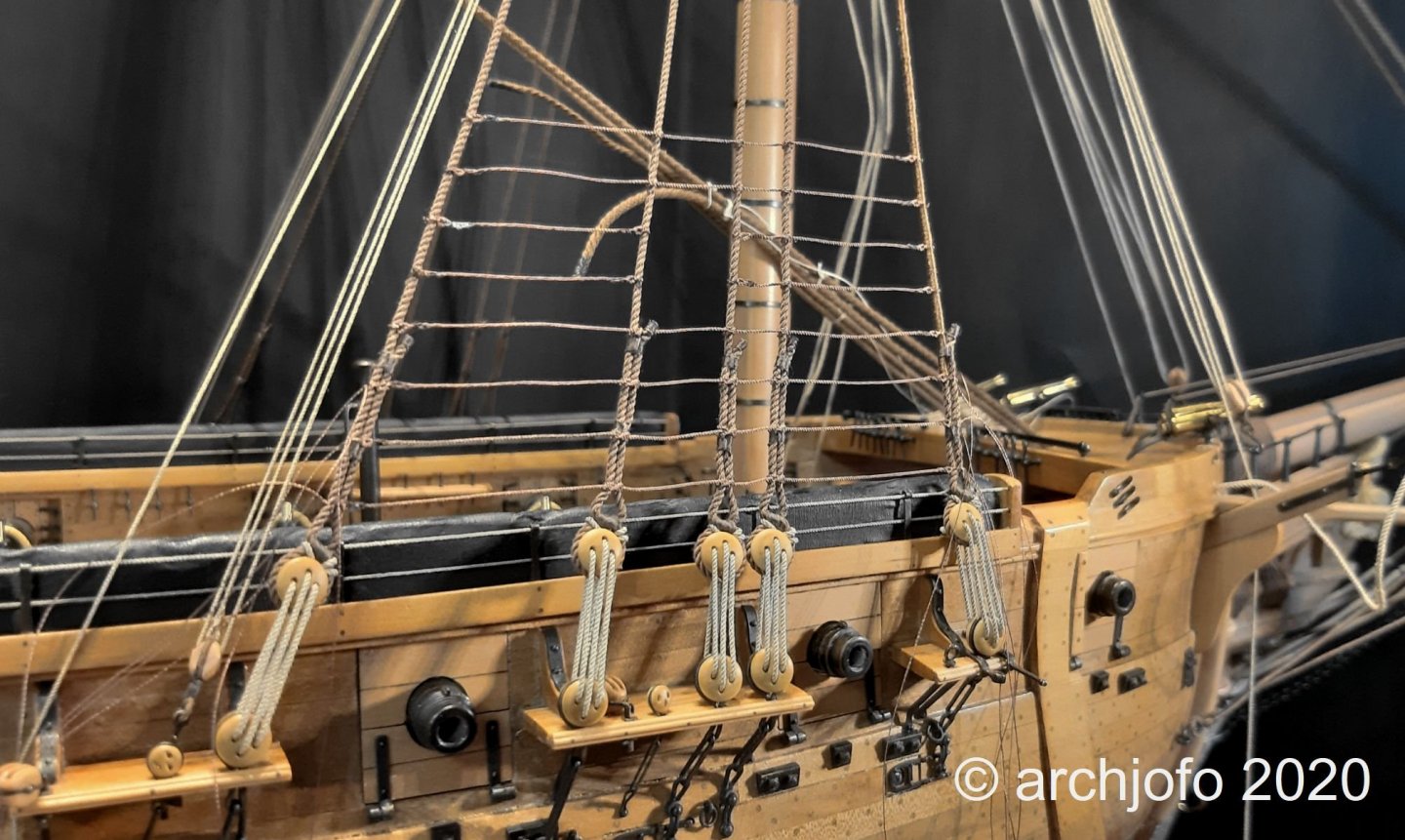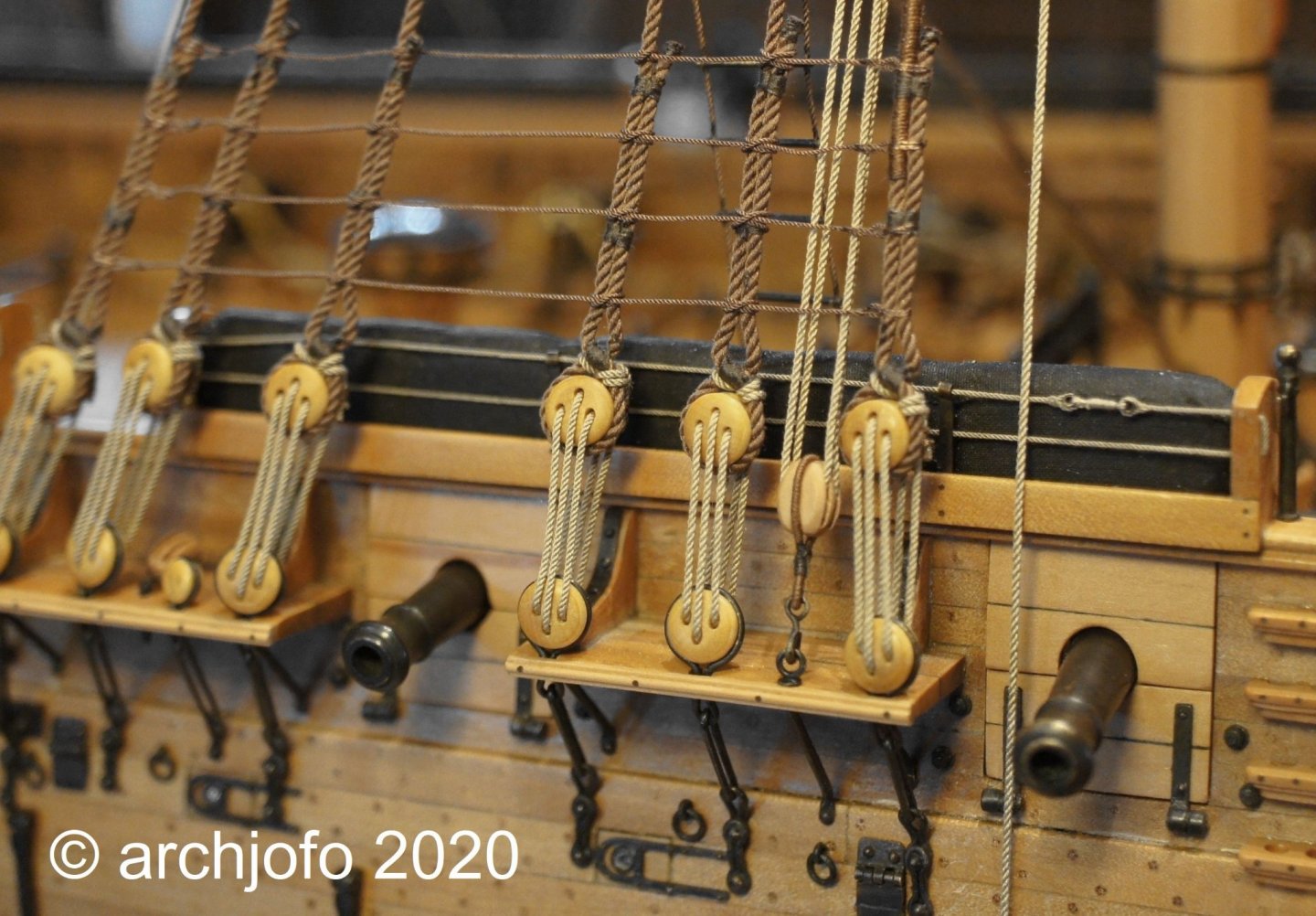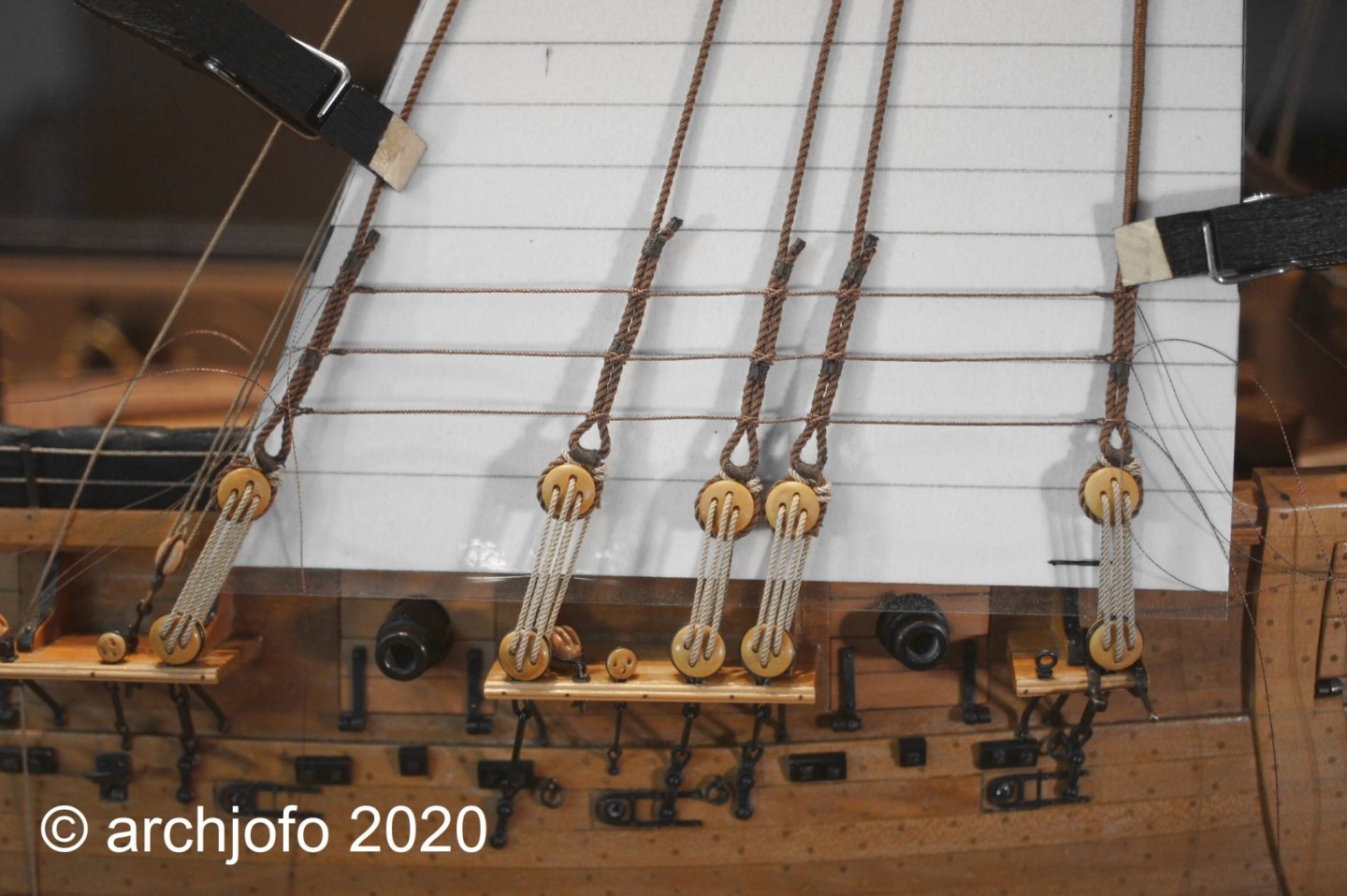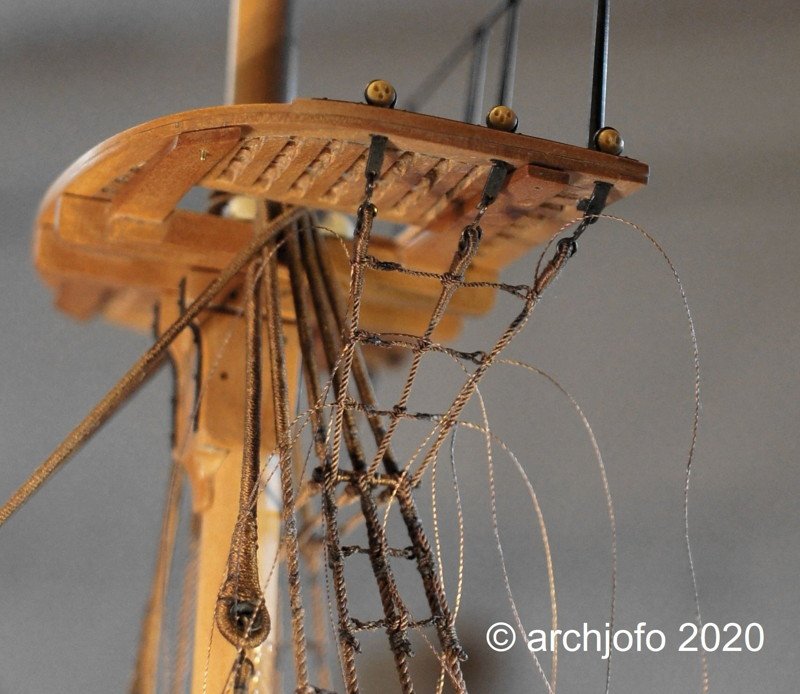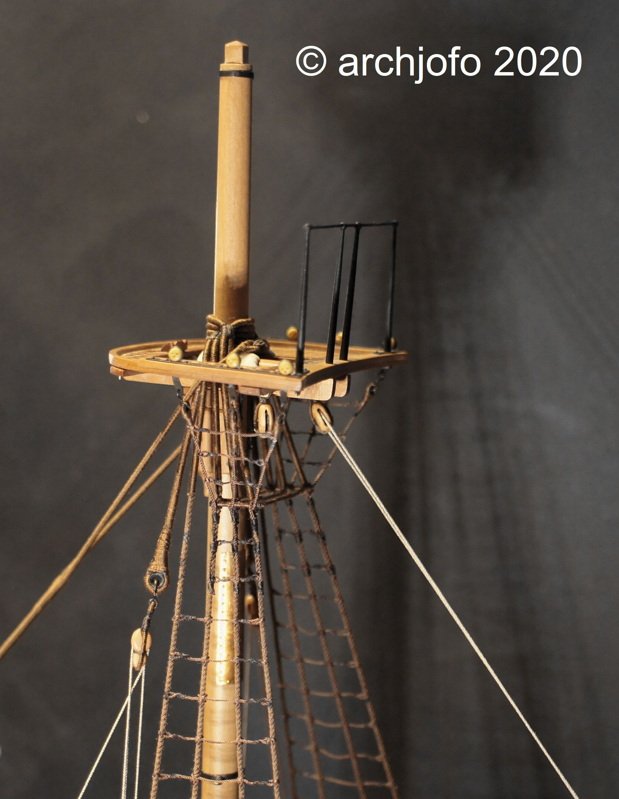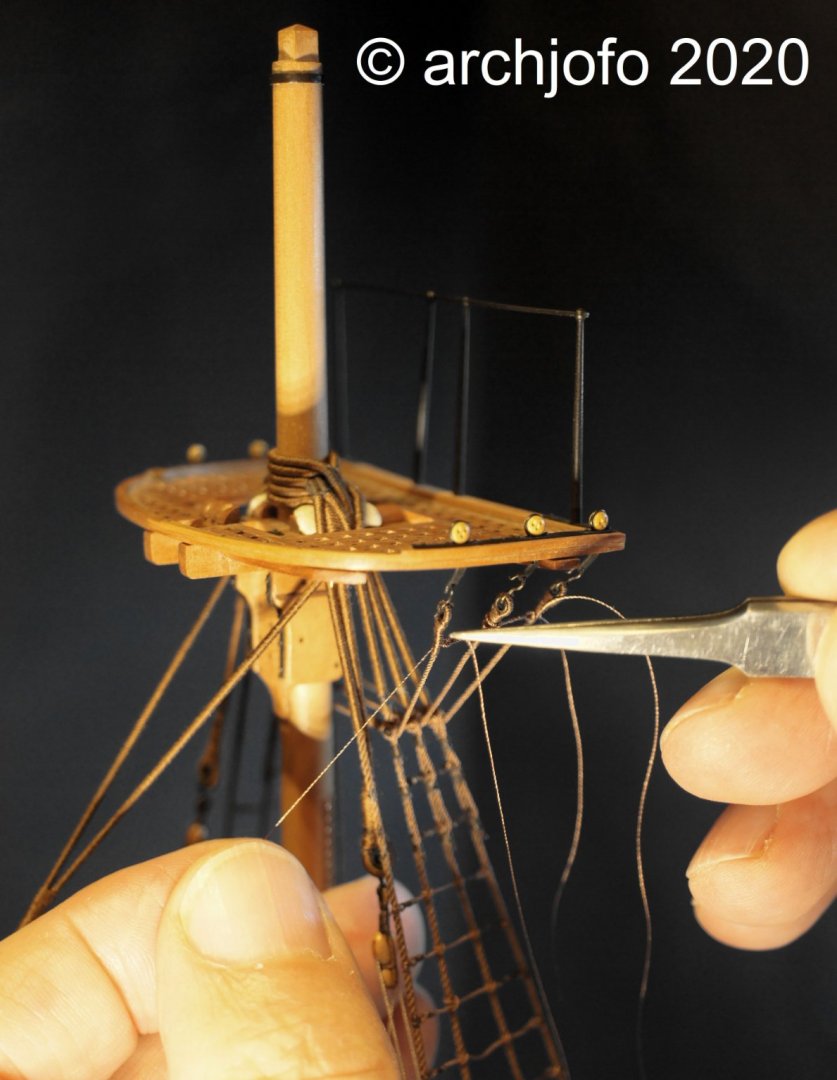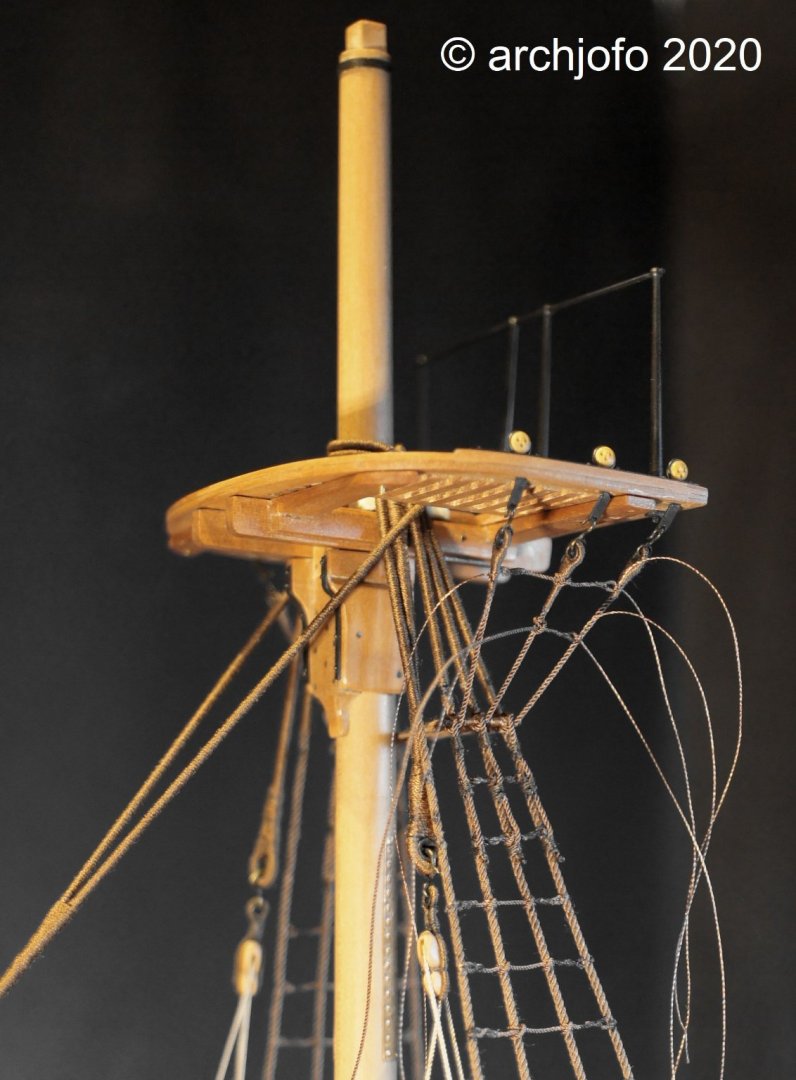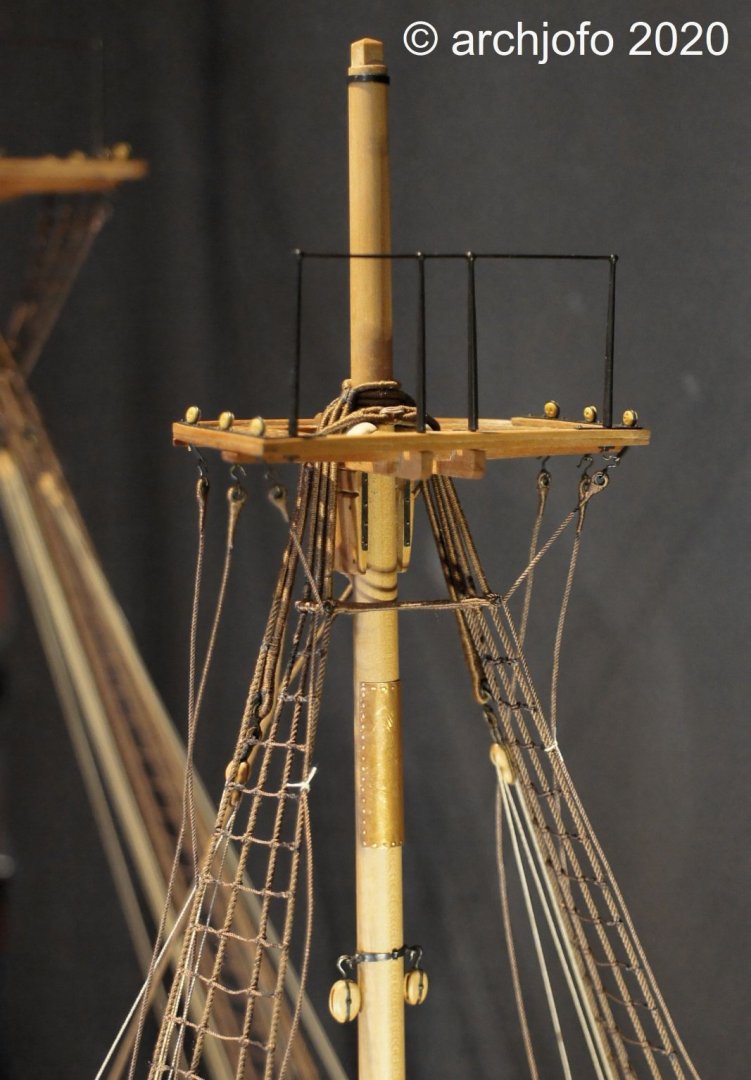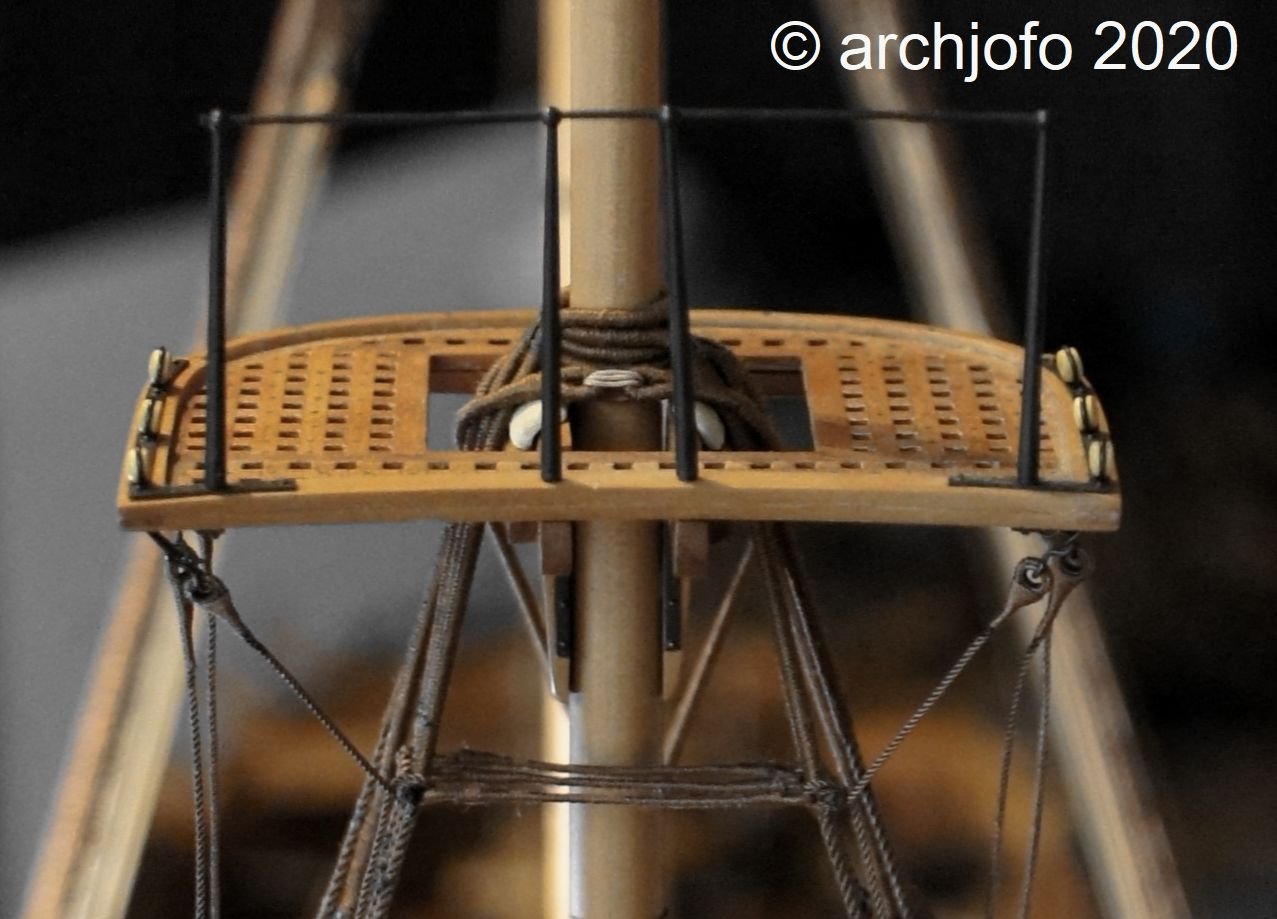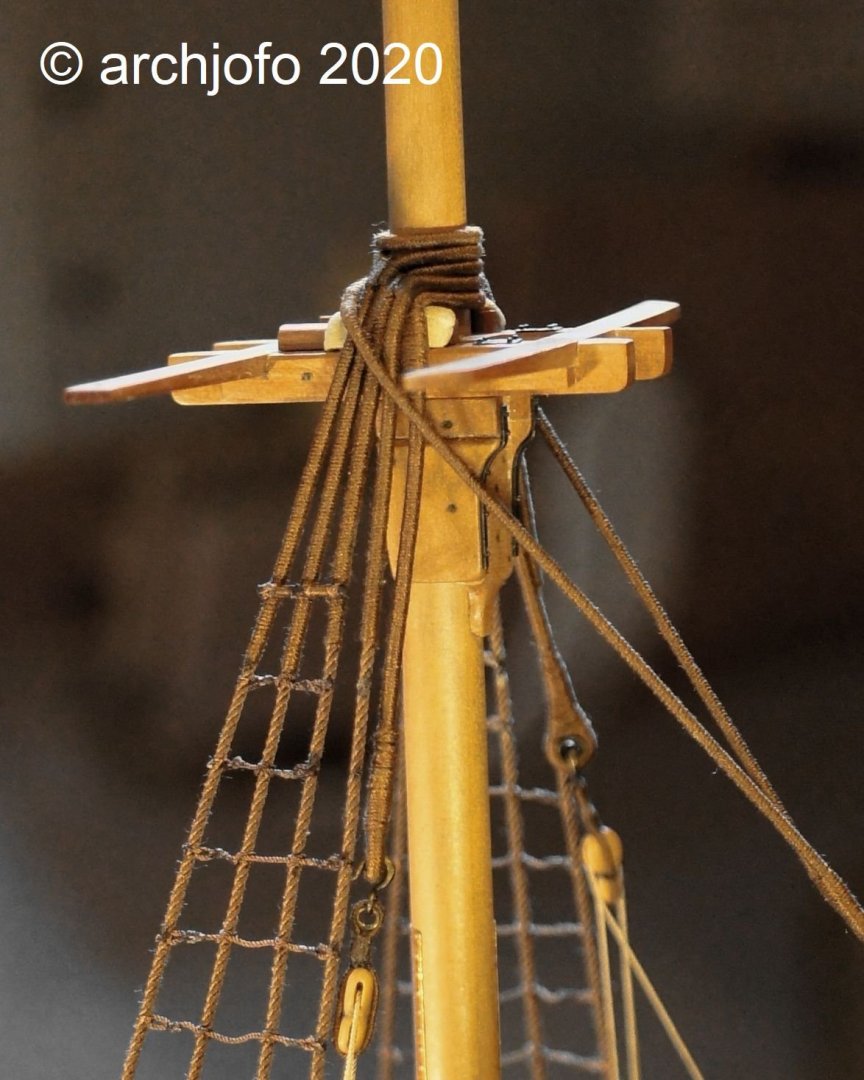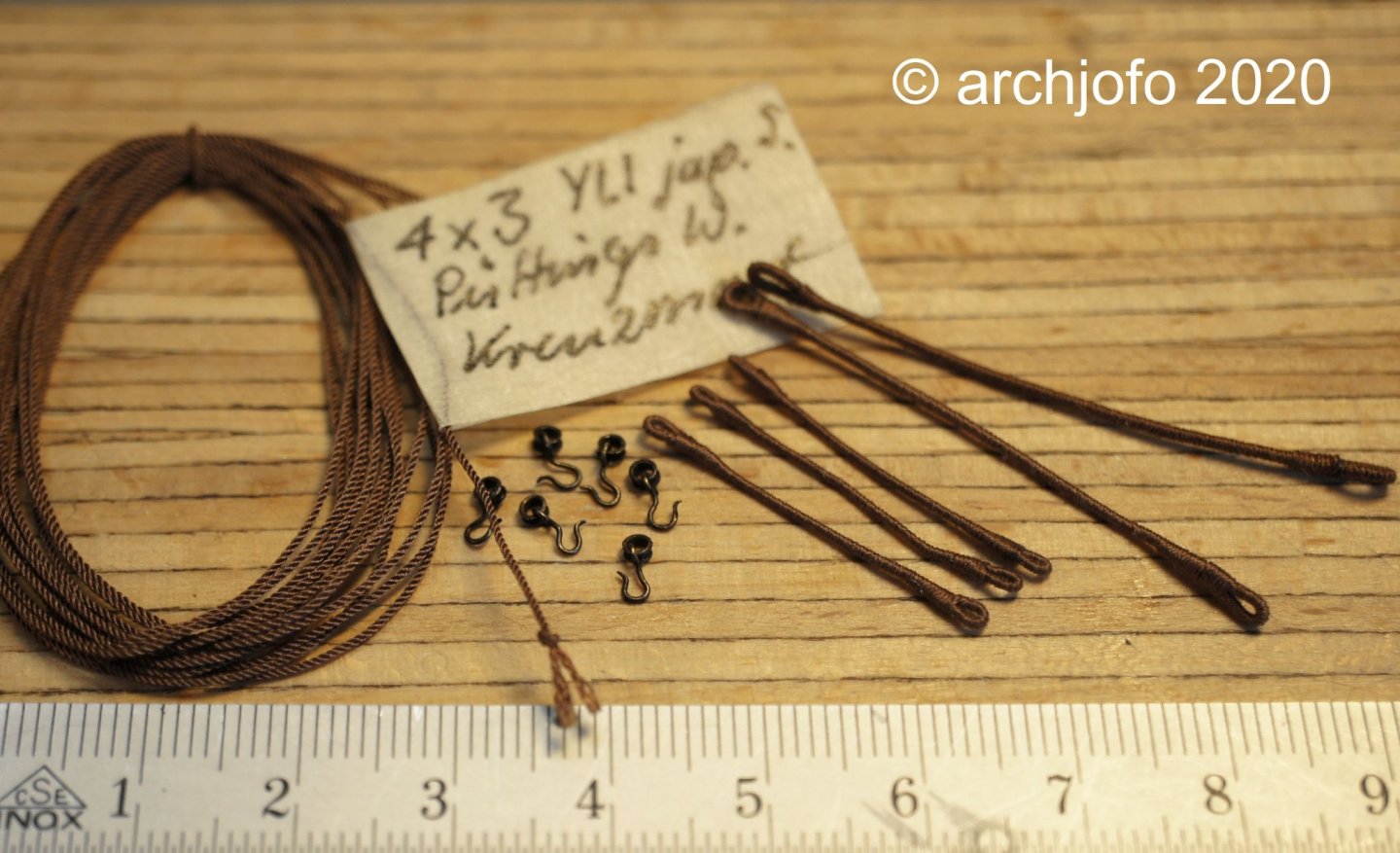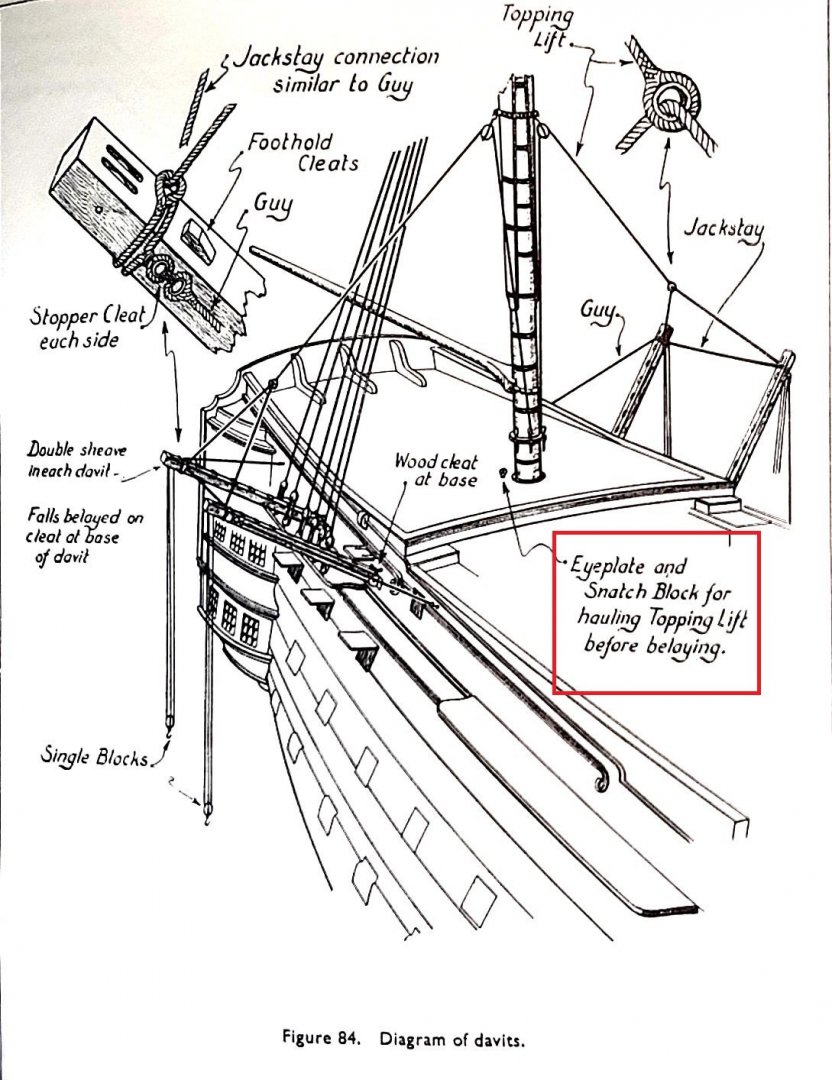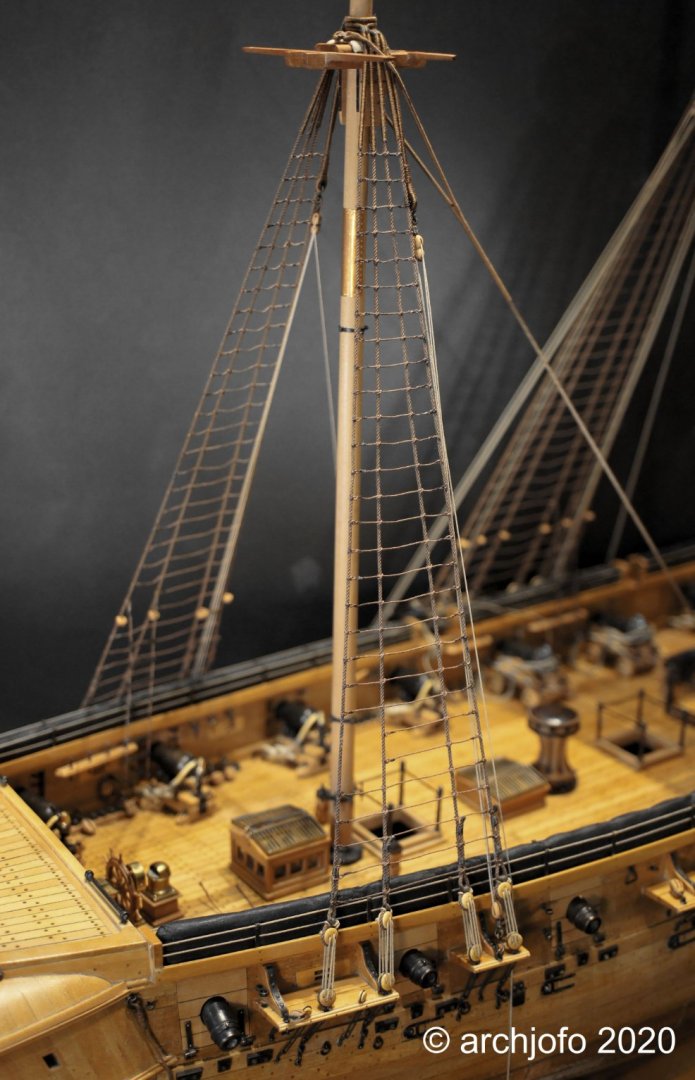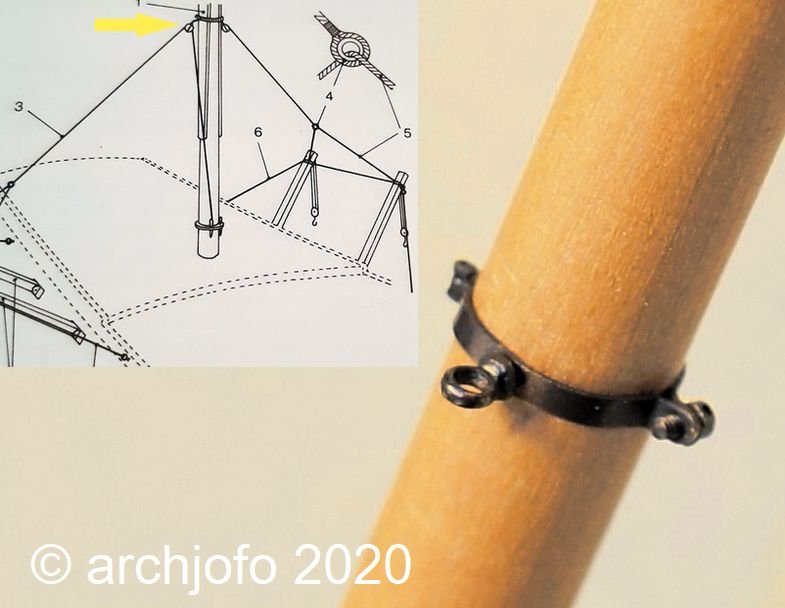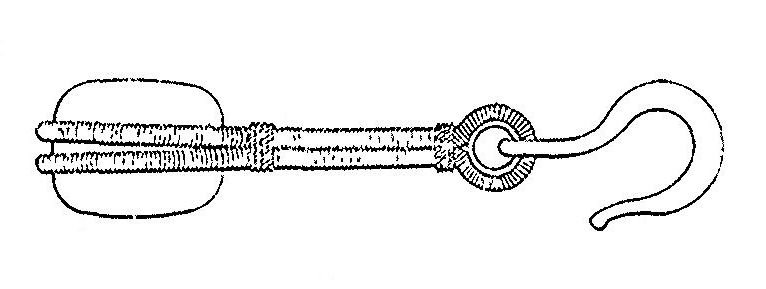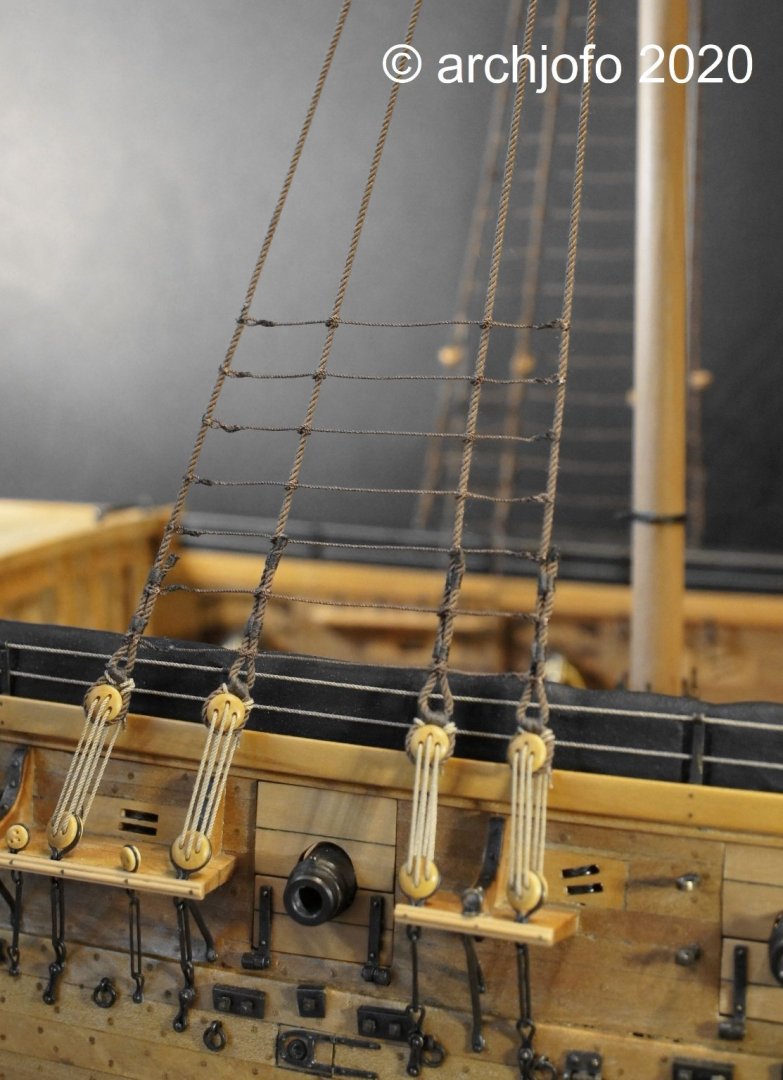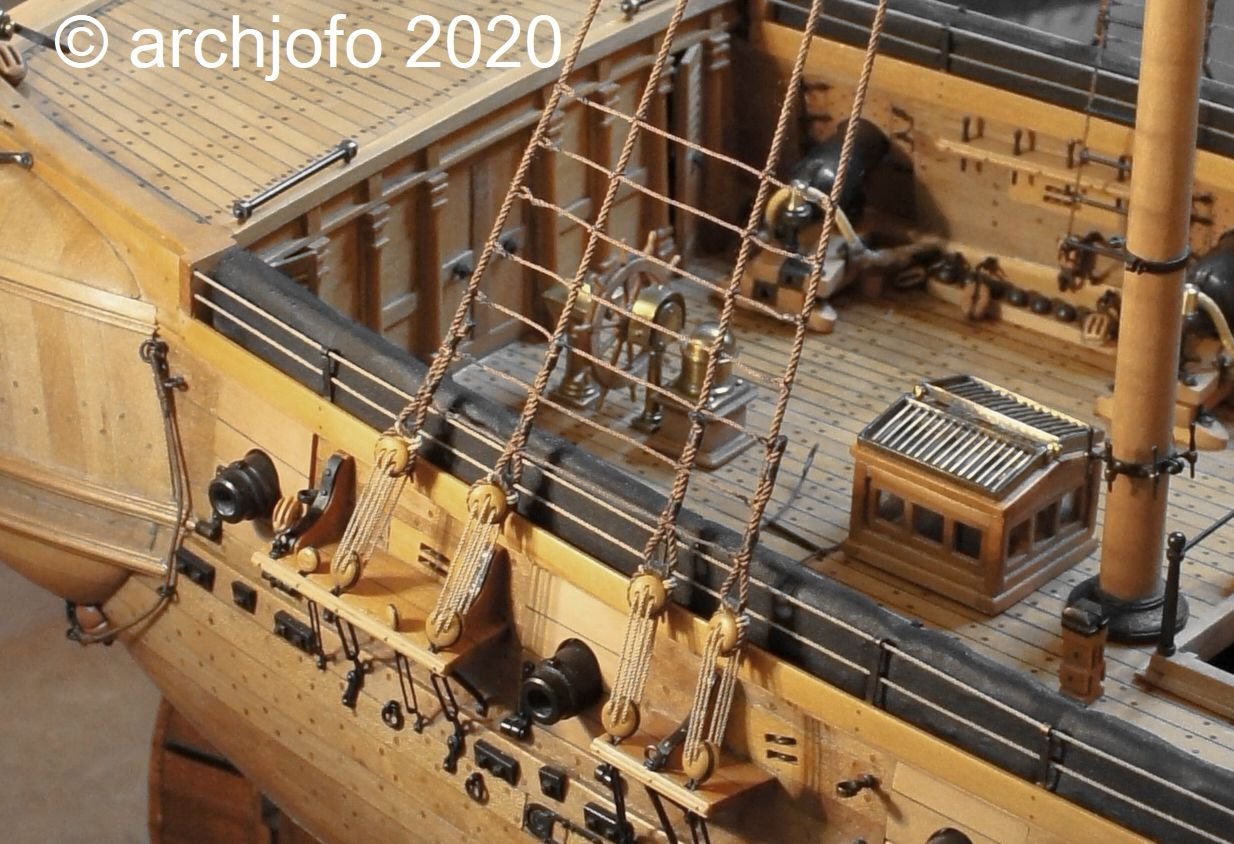-
Posts
1,495 -
Joined
-
Last visited
Content Type
Profiles
Forums
Gallery
Events
Everything posted by archjofo
-
@Dowmer @FriedClams Hello, thanks for your positive comments and all the others for the LIKES. The foremast top also requires various guide blocks. These are attached to the underside, as can be seen in the first picture. Quelle: Musée de la Marine Paris – La Crèole The small blocks of around 3.5 mm in length are only indicated by the sheaves. The large blocks, as seen in the picture for example, I equip with brass sheaves. For making the block strops I will serve ropes with a diameter of 0.35 mm. More about that soon.
-
Hello, first of all, I would like to thank you for the positive reaction and of course for the many LIKES. As can be seen in the following picture, the last eye for attaching the last ratlines of the futtock shrouds of the foremast has just been spliced directly on model. This gives me cause to deal with the execution of the shrouds of the topmasts and subsequently with the corresponding ratlines. Some time ago I dealt intensively with the diameters of the ropes for the ratlines. In this respect I may refer to the corresponding passages in my construction report: LINK (you have to scroll down). After several attempts and interesting discussions in various forums, I finally decided to make the ratlines of the lower shrouds of my model with ø 0.35 mm (corresponds to ø16.8 mm in the original). In retrospect, this decision proved to be completely correct. The weaving lines of ø 0.43 mm (ø 21 mm in the original), according to the information in the monograph by Jean Boudriot, would appear too thick on the model. Since the topmast shrouds were much thinner than the lower shrouds (comparison on the model: topmast shrouds of the foremast ø 0.66 mm / foremast shrouds ø 1.08 mm), their ratlines should also have smaller diameters. At the moment, I am therefore trying to clarify whether the required eye splices can be made with rope thicknesses of ø 0.25 mm. For this purpose, I made a splicing tool with a smaller diameter ø 0.8 mm, as shown in the next picture. The making of an eye splice (push through 2 times) with a rope thickness of ø 0.35 mm has become quite successful due to much practice. With a 0.25 mm diameter, it is much more difficult and not yet so easy. The macro shots make the whole thing seem more harmless than it actually is. Whether I can apply this to the topmast shrouds in this way, I will have to clarify and ultimately decide in due course through further trials. Alternatively, a cow hitch knot would be conceivable. Both possibilities are shown in the last picture with a rope corresponding to the topmast shrouds. Below I show a comparison of a ratline connection as it has been made for the lower mast shrouds. In the end, I like the version with an eye splice better, as it is not so thick and comes closer to the original. What is your opinion?
-
Hello, between the holidays I was able to spend more time on model building. Unfortunately there is nothing spectacular and new to report: Continued: Ratlines - Enfléchures The last ratlines knots on the port side lower shrouds of the foremast have been set. Now all lower shrouds of La Créole are equipped with ratlines. The preparations for the missing futtock shrouds on the foremast are already in progress. I am currently making the corresponding rigging elements.
-
@Keith Black Thanks for nice comment. Also many thanks for the LIKES. Another small stage of the standing rigg of La Créole has been completed: the ratlines of the mizzen mast are finished. The integration of the shrouded ladders and the signpost blocks is still missing. In the meantime, a small detail needs to be clarified once again. The side davits for the "Petit Canoes" of the corvette were made of iron and were lifted with a topping lift. These were shorn by single blocks on the mizzen mast. How these single blocks were attached to the eyes of the ring fitting on the mizzen mast still needs further clarification. Unfortunately, I do not have any pictures of the original model of the relevant area, where one can see more details. In the documents available to me I could not find anything meaningful about this either. In this respect a question to the experts here in the forum: How could the fixing of the single block/lead block and the continuation have looked like, e.g. as shown below? I would be very pleased if I could get answers or hints and suggestions. - I would be very grateful if you could send me your comments. See you soon ...
-
@KORTES This is a beautiful showcase for a fantastic model ship. Congratulations for the completion.
- 306 replies
-
- schooner
- la jacinthe
-
(and 1 more)
Tagged with:
About us
Modelshipworld - Advancing Ship Modeling through Research
SSL Secured
Your security is important for us so this Website is SSL-Secured
NRG Mailing Address
Nautical Research Guild
237 South Lincoln Street
Westmont IL, 60559-1917
Model Ship World ® and the MSW logo are Registered Trademarks, and belong to the Nautical Research Guild (United States Patent and Trademark Office: No. 6,929,264 & No. 6,929,274, registered Dec. 20, 2022)
Helpful Links
About the NRG
If you enjoy building ship models that are historically accurate as well as beautiful, then The Nautical Research Guild (NRG) is just right for you.
The Guild is a non-profit educational organization whose mission is to “Advance Ship Modeling Through Research”. We provide support to our members in their efforts to raise the quality of their model ships.
The Nautical Research Guild has published our world-renowned quarterly magazine, The Nautical Research Journal, since 1955. The pages of the Journal are full of articles by accomplished ship modelers who show you how they create those exquisite details on their models, and by maritime historians who show you the correct details to build. The Journal is available in both print and digital editions. Go to the NRG web site (www.thenrg.org) to download a complimentary digital copy of the Journal. The NRG also publishes plan sets, books and compilations of back issues of the Journal and the former Ships in Scale and Model Ship Builder magazines.



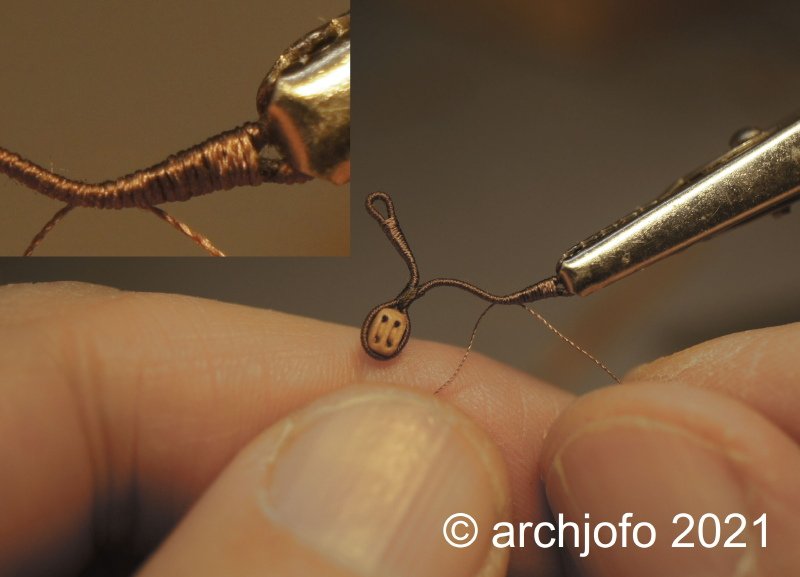
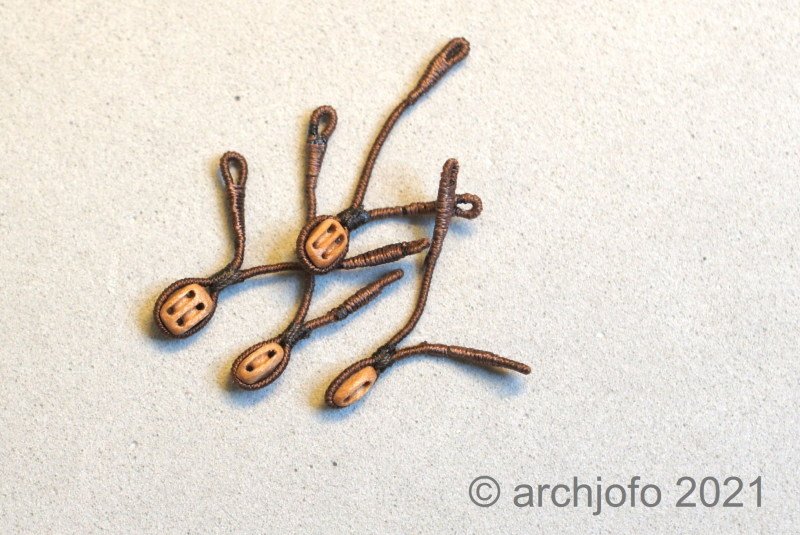

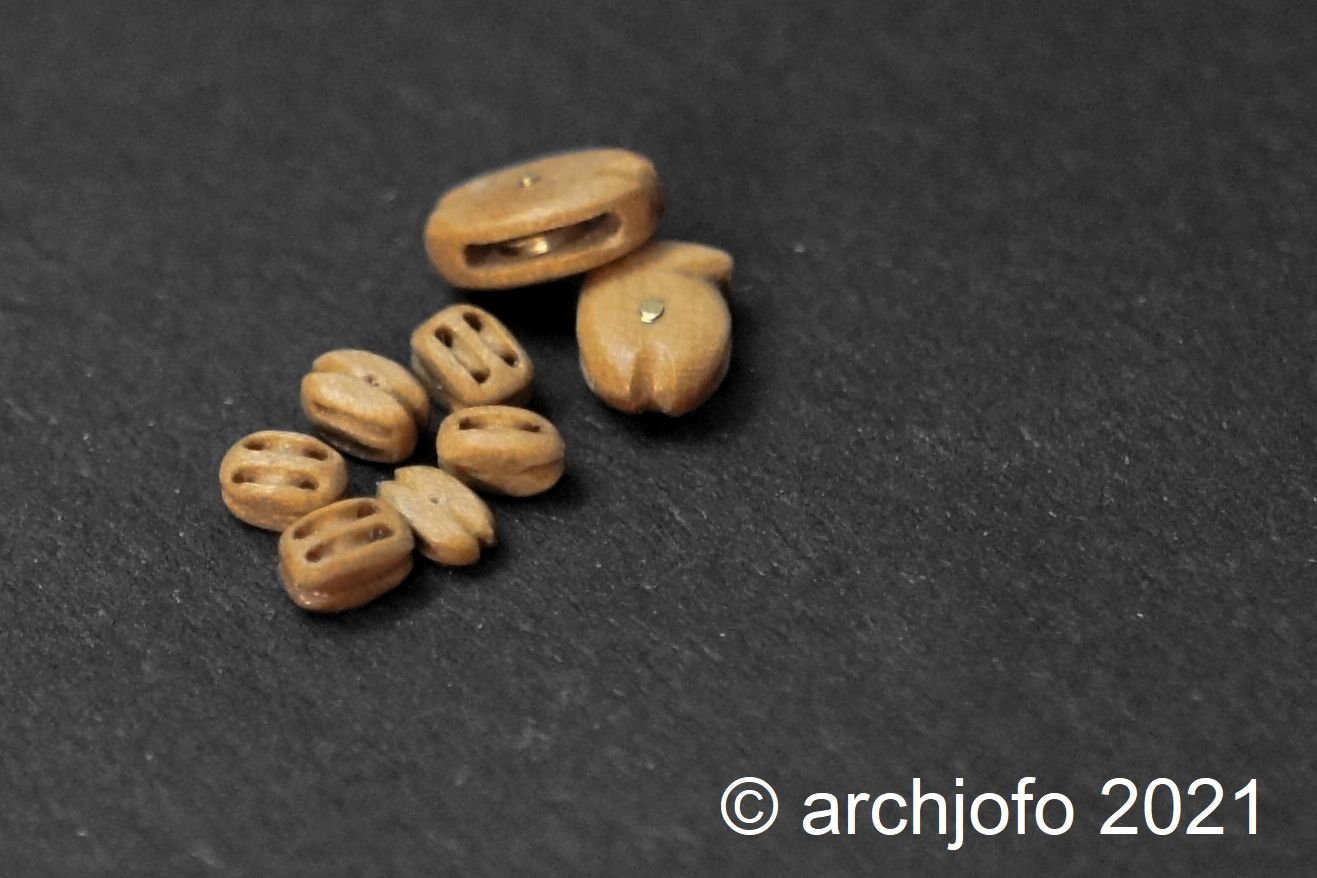
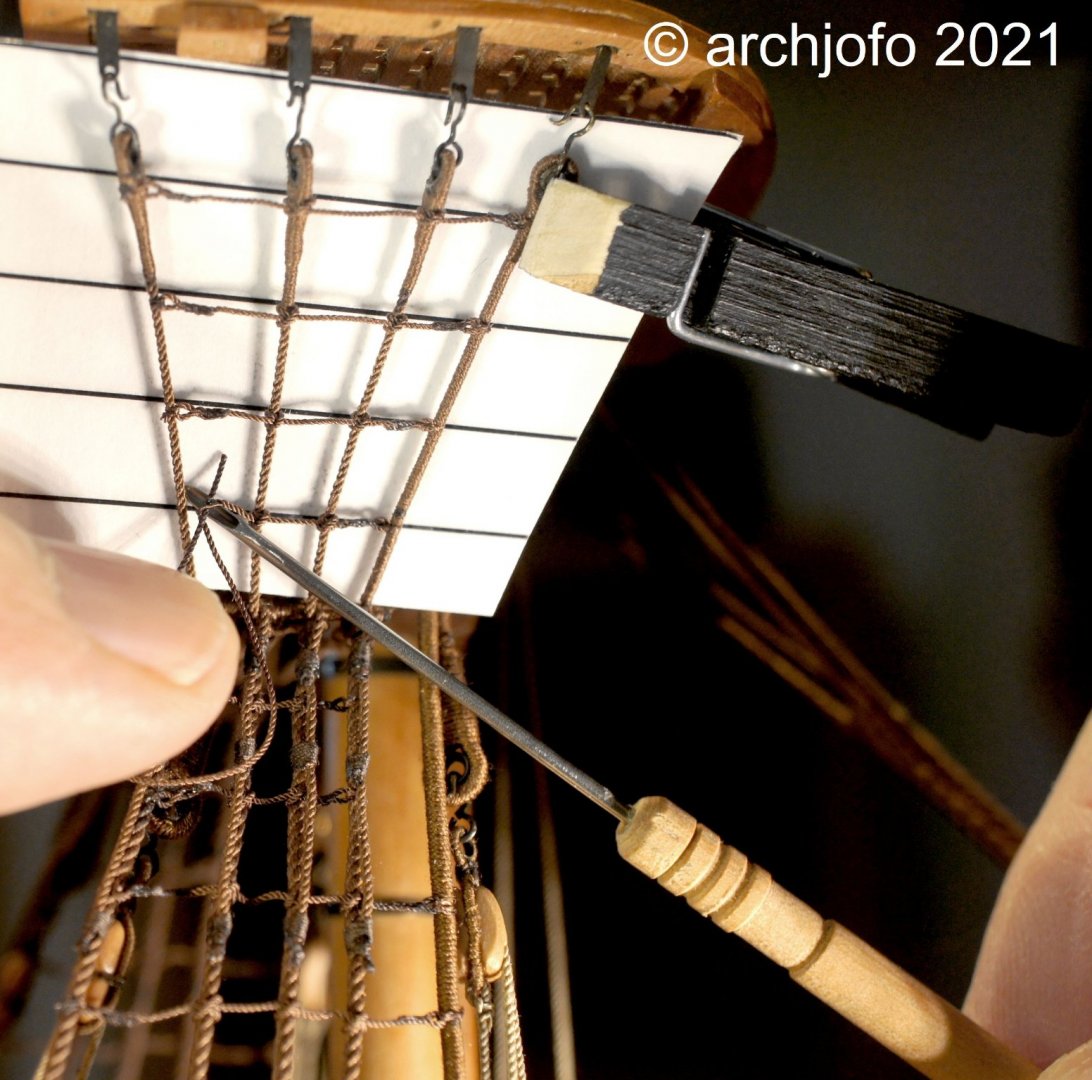
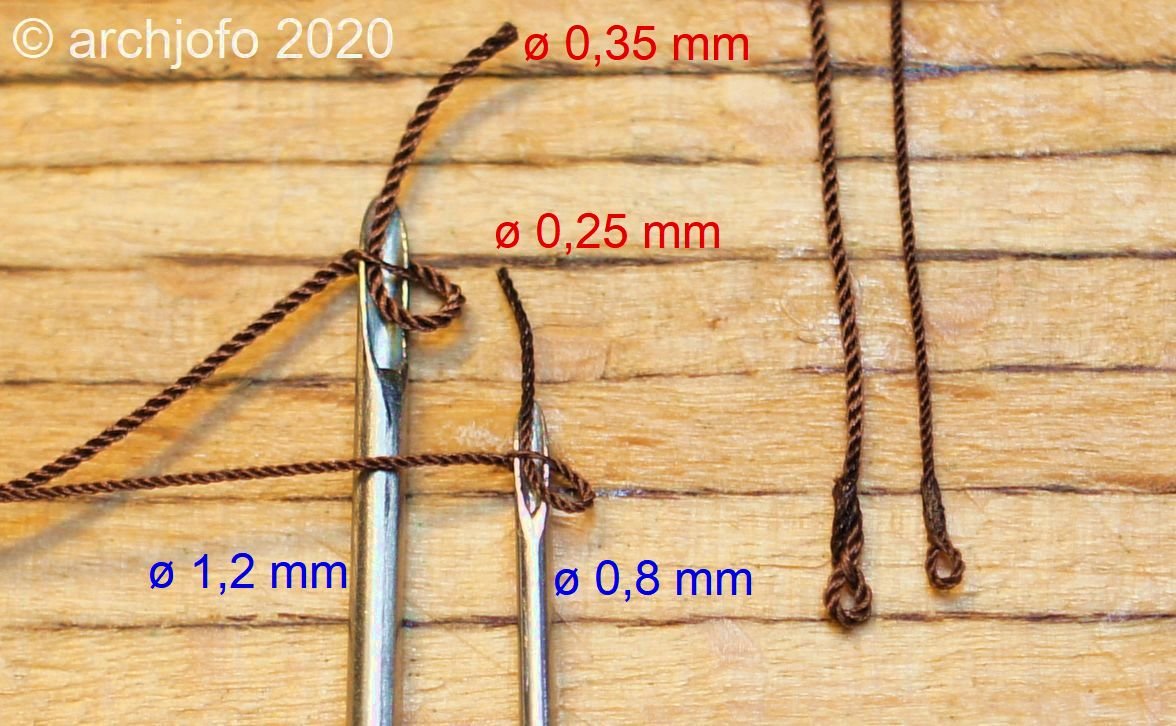
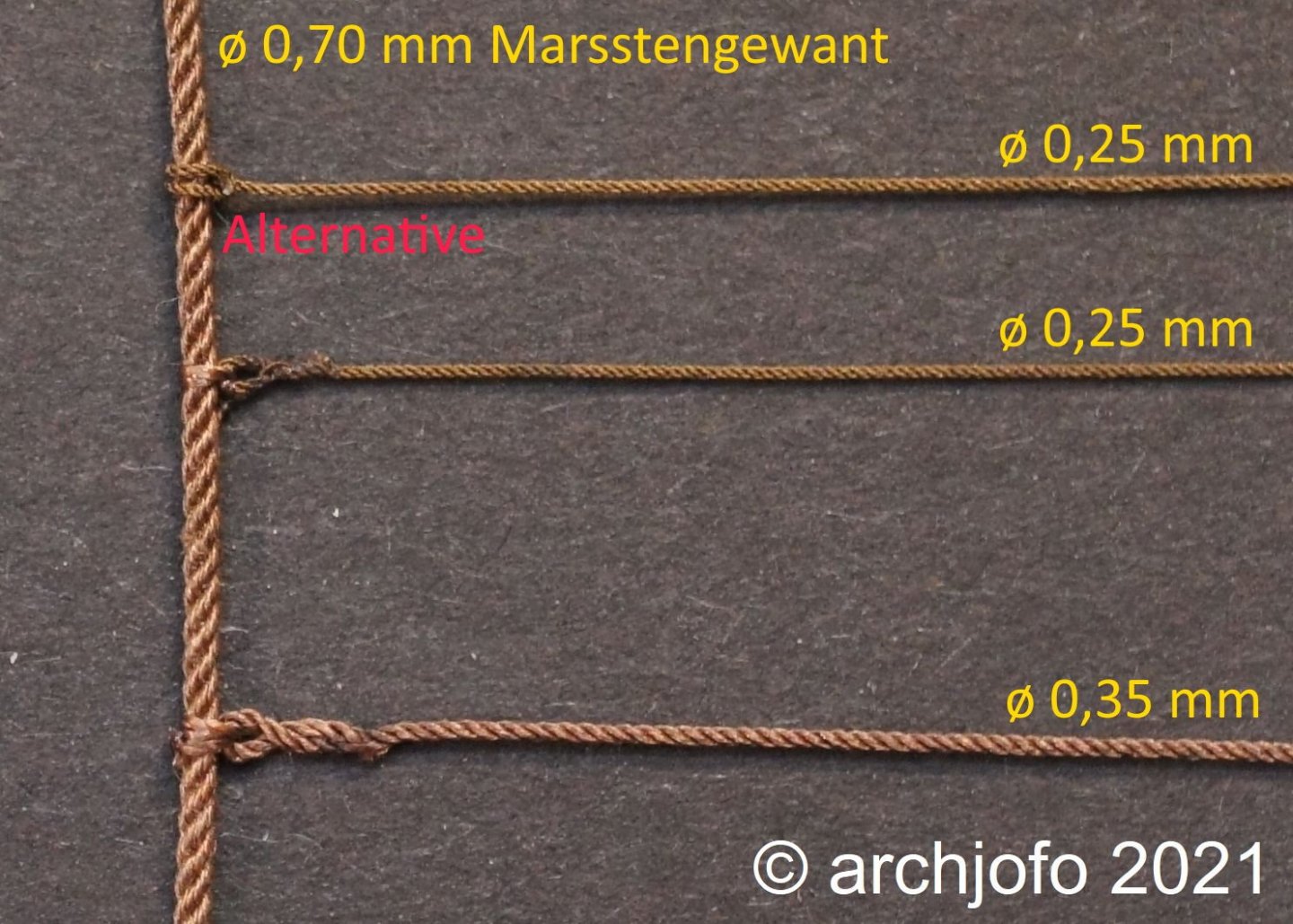
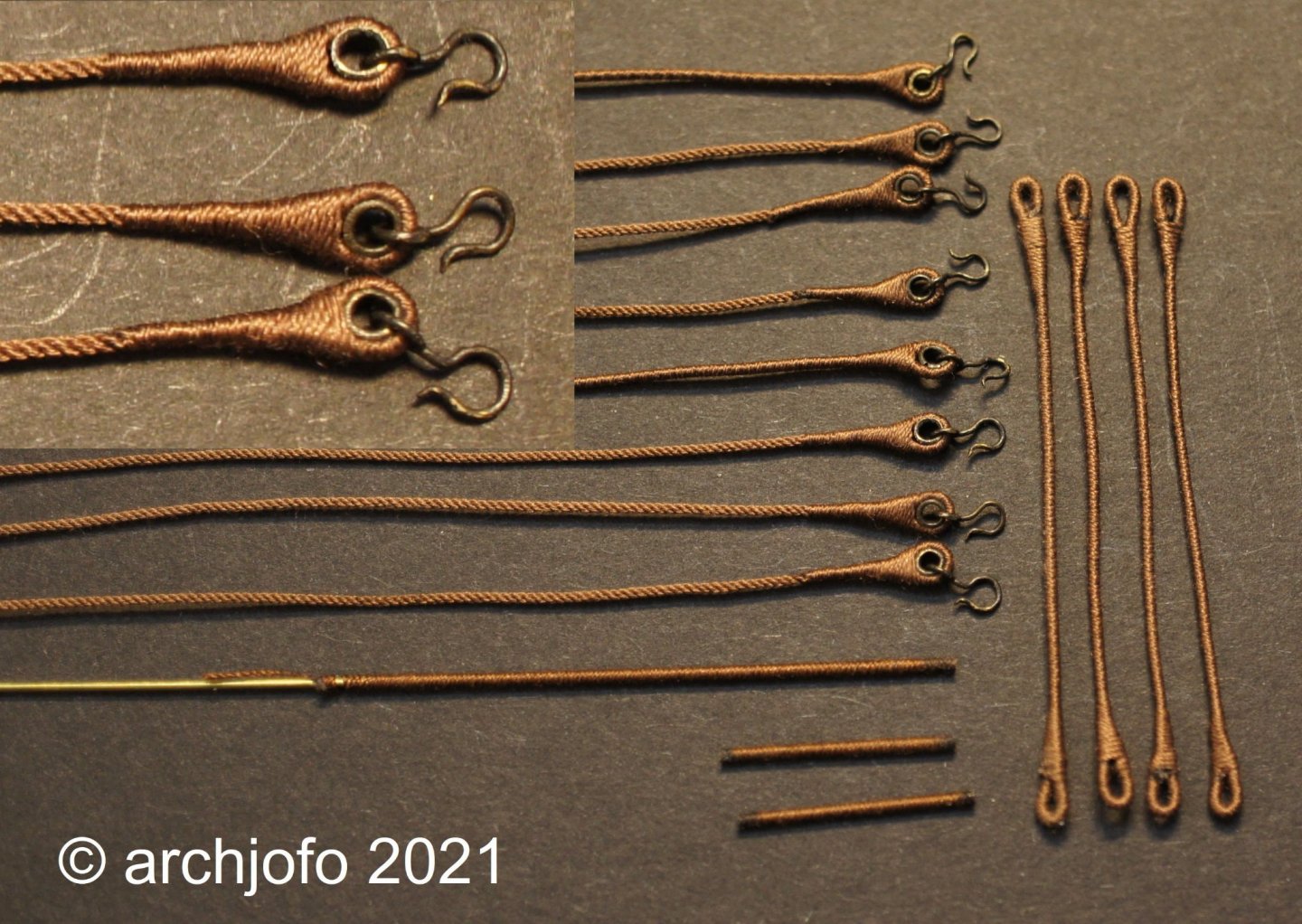

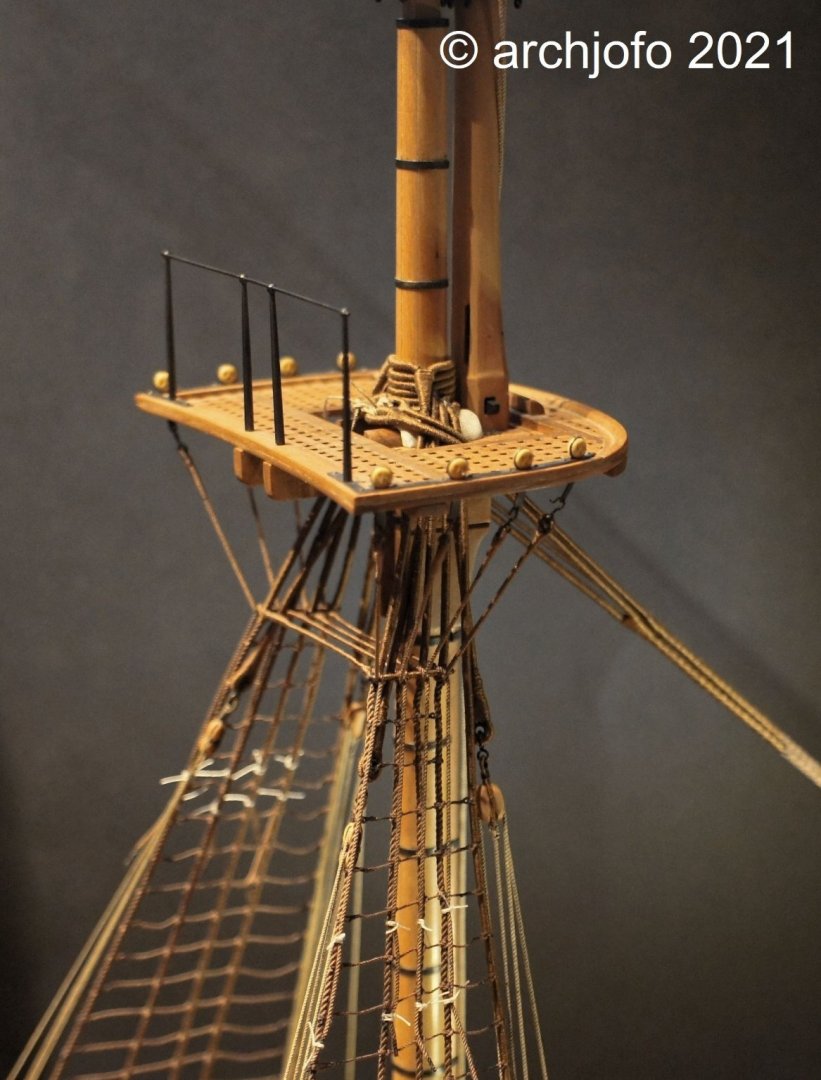

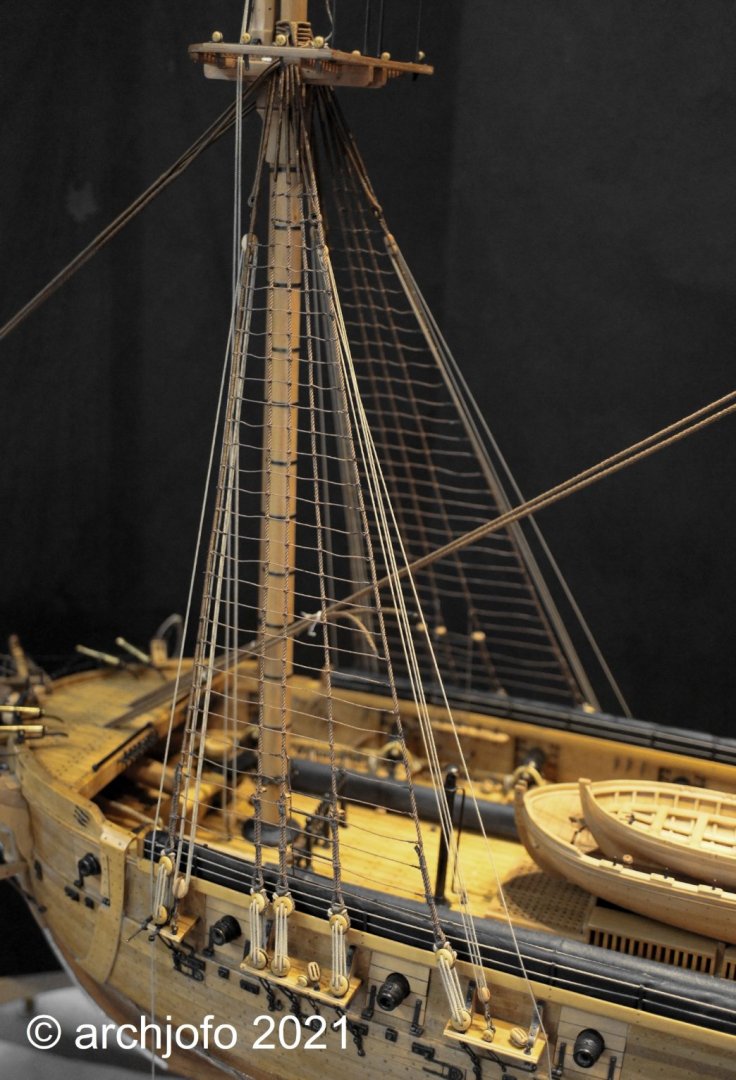
.jpg.b6cb14ffdcafe64909a5beb0742bd971.jpg)
